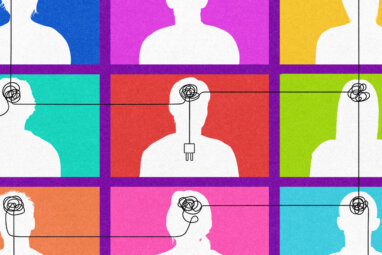Accelerating Innovation Through a Network of Ecosystems
What companies can learn from one of the world’s largest networks of accelerator labs.

Image courtesy of Brian Stauffer/theispot.com
A United Nations agency with a sweeping mission and sprawling global presence may not appear to be the most likely place where companies can learn new techniques for accelerating innovation — but appearances can be deceiving. The United Nations Development Programme (UNDP), an organization of 17,000 employees spanning 170 countries, focuses on solving the world’s most complex problems — ending poverty, ensuring healthy lives and well-being, providing affordable and clean energy, reducing inequalities, and more — through local, regional, and global initiatives and an annual budget of $5 billion.1 In our exploratory research,2 we have found that this organization is making exceptionally progressive innovation moves both at its headquarters and in the field by building and sustaining one of the world’s largest networks of accelerator labs — 60 of them, serving 78 countries.3
That’s why the agency provides such an instructive example for businesses. Usually, managers think about building an ecosystem for innovation, and most research-based advice focuses on challenges and opportunities that arise in that setting.4 But UNDP has gone much further, creating a large network of ecosystems that revolve around its labs, and building connections with local partners while also helping the labs coordinate with one another. In short, it’s solving the acceleration problem with a portfolio mindset, employing the power of the collective, and it’s doing so at an unprecedented scale.
Business leaders can take a similar approach to address innovation challenges across teams, units, and regions — and to tackle projects that would benefit from both local and global expertise. For inspiration, we’ll consider a few examples of multinational companies that have recently deployed their own networks of ecosystems. But first, let’s look at how the UNDP model evolved into what it is today and what it’s been able to accomplish so far. People tend to assume that all large government-related organizations are highly centralized, under-resourced, and sluggish, especially when it comes to trying anything new. However, over the past few years, under fresh leadership, UNDP has been learning from early mistakes and creating a new organizational structure to more effectively and efficiently ramp up its efforts in the area of sustainable development.
It’s a story of major change, to be sure.
References (18)
1. “Sustainable Development Goals,” UNDP, accessed Dec. 21, 2019, www.undp.org, and “UNDP Strategic Plan, 2018-2021,” United Nations, Oct. 17, 2017, https://undocs.org.
2. We have met with leaders of UNDP, participated in a UNDP networked-learning workshop, and reviewed UNDP and third-party reports, articles, and blog posts to understand the agency’s recent efforts.




